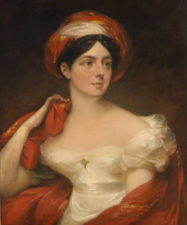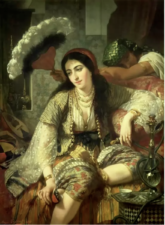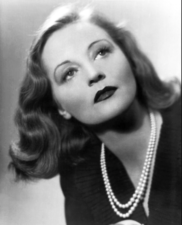Medieval women’s voices are notoriously difficult to hear through the surviving records, which principally reflect male dominated elites of the political, social and religious Western world in which they were created. A world in which women were frequently caricatured as morally weak, lascivious temptresses, and in which all language of heroism was couched in virile terms. Many historians have been seeking to correct this imbalance over the last 30 years, by, as Caroline Walker Bynum observed in 1999, trying to “listen hopefully, certain of catching genuine echoes” of women. Continental European women are frequently more audible in the records than British ones, and this is especially true of the religious and visionary women of the high middle ages. In Germany Hildegard of Bingen left a large corpus of various kinds of texts, including letters to Popes and Emperors, alongside her books of visions. In France, Abbess of the Paraclete and lover of Abelard wrote some of the most moving and intellectually sophisticated thoughts of the age in her continued pining for her husband lost to her for a life of religion.
Quiet is not, however, completely silent, and Christina of Markyate is unique as a twelfth-century religious Englishwoman in having commanded sufficient high regard amongst some of her contemporaries for a Latin saints life, or vita, about her to be commissioned. The original of this lost vita was kept for many years at the Markyate priory in north Hertfordshire which grew out of her informal religious community, and was probably the direct source for both of the surviving fourteenth-century abbreviations used today by historians. It tells the struggles of Theodora, an Anglo-Saxon noblewoman from Huntingdon, trying to resist marriage by fleeing to the protection of local hermits. Changing her name to Christina, she became a hermit and later, as the community of women that has built up around her gained a more official status, a prioress and the close confidante of Abbot Geoffrey of St Albans. Her vita was most likely commissioned by the Abbot and written by a monk from his St Albans community. The wealth of personal detail found in it shows the anonymous Writer to have also been closely acquainted with Christina and her family and friends.
Almost all that we know of Christina comes from the fourteenth century version of this text, and though we have little direct access to her own words, nevertheless it offers a route into the priorities of a remarkably determined, uncompromising and sometimes surprisingly modern-seeming woman. She is, undeniably, contained within a male-authored narrative and a genre which prioritised spiritual truth over what actually biographically happened, yet this account is unusual partly because it was written whilst Christina was still alive. This made for a problematic juxtaposition between the immediacy of her lived experience and the symbolic narratives of saint’s lives which were usually composed long after the subject of the text had died. In Christina’s case there was only so much ‘tidying up’ that could be done of a contemporary public figure, relatively well known in the South East, with contacts in politically influential abbeys and run-ins with several bishops. It also seems from the vita that Christina recognised her visionary powers as a remarkable divine gift and that she herself wanted them recorded. She suggests, in one recorded incident, that if visions like hers had happened during the time of the celebrated fifth-century Pope Gregory the Great then they would have been written down. Christina, then, had reason for wanting the vita to be written, and contributed some of the stories to it – whether she was fully happy with the outcome is a different question.
Christina was precocious in her religiosity, as were many women of spirit, but her visions only seem to have started in earnest when this religiosity was threatened by her impending marriage. Her vita indicates that she made a vow of virginity in her youth, but struggled to protect it against the machinations of her family who repeatedly tried to trick or force her into consummating a marriage arranged by Ranulf Flambard, the notoriously immoral Bishop of Durham, whose sexual advances she had spurned. She ran away after another corrupt Bishop, Robert Bloet of Lincoln, was bribed into ruling against her wish for the celibate life. For several years she lived in hiding within a network of Anglo-Saxon hermits, notably with the deacon-hermit Roger. Roger helped her to cultivate the natural aptitude for spiritual sight that they shared, and ultimately entrusted his growing community to her care. But even after six years away Robert Bloet had not given up his pursuit of the runaway bride, and after Roger’s death, a third primate, Thurstan the Archbishop of York, stepped in to help her, placing her under the protection of a clerical friend. This turned out to be a disaster since both the friend and Christina were tempted to lust, and she eventually returned to Markyate to be comforted by further visions, including receiving a crown of inviolate virginity from angels sent by Christ.
Slowly a community of virgins joined her and Christina must have proven to be just as good a household manager as her family had predicted, since charter evidence shows that she managed to attract lay patronage as far away as Warwickshire to support her fledgling community. Christina seems to have met Abbot Geoffrey in about 1124, and her middle age was dominated by their friendship, in which she provided spiritual and he material assistance. This friendship was intense, with Geoffrey so inspired by Christina’s visionary spirituality that he even had the elaborately illustrated Hildesheim (St Albans) Psalter redirected for her use. Over the next two decades the focus of Christina’s spiritual abilities frequently turned towards the Abbot, and even resulted in her meddling in the high politics of England, when her visions protected Geoffrey from having to travel on sensitive Church business during the civil war between King Stephen and Queen Matilda.
This exciting romance of hiding and revelation, hope and fear, has achieved sufficient fame to be extensively summarised in modern books and university course documents, but at the time was abandoned – incomplete and unrevised – after Geoffrey’s death in 1146 when Christina was about 50 years old and the successful prioress of a flourishing Benedictine convent. It was saved rather by chance, when in the fourteenth century St Albans showed new interest in her hermit mentor, Roger, and there is no evidence for a sustained post-mortem cult for her. Ultimately Christina’s charisma did not succeed in carving out a new kind of holy role for visionary religious women in England to parallel the flourishing of continental women of spirit in the twelfth and thirteenth centuries. She does, however, offer an insight into the life choices that a strongwilled woman could make, as well as the price that had to be paid for those choices.
Christina’s vita was first transcribed and translated by C.H. Talbot in 1959, and revised by Samuel Fanous and Henrietta Leyser in 2008. Both editions are available from Oxford University Press.
Joanna Royle completed her PhD on Christina of Markyate at the University of Glasgow in 2008. She teaches at Glasgow International College, and her research focuses on what was valued, normative and recognisable in the spiritual and visionary landscape of twelfth-century England.



1 thought on “Women’s History Month: Christina of Markyate”
Comments are closed.